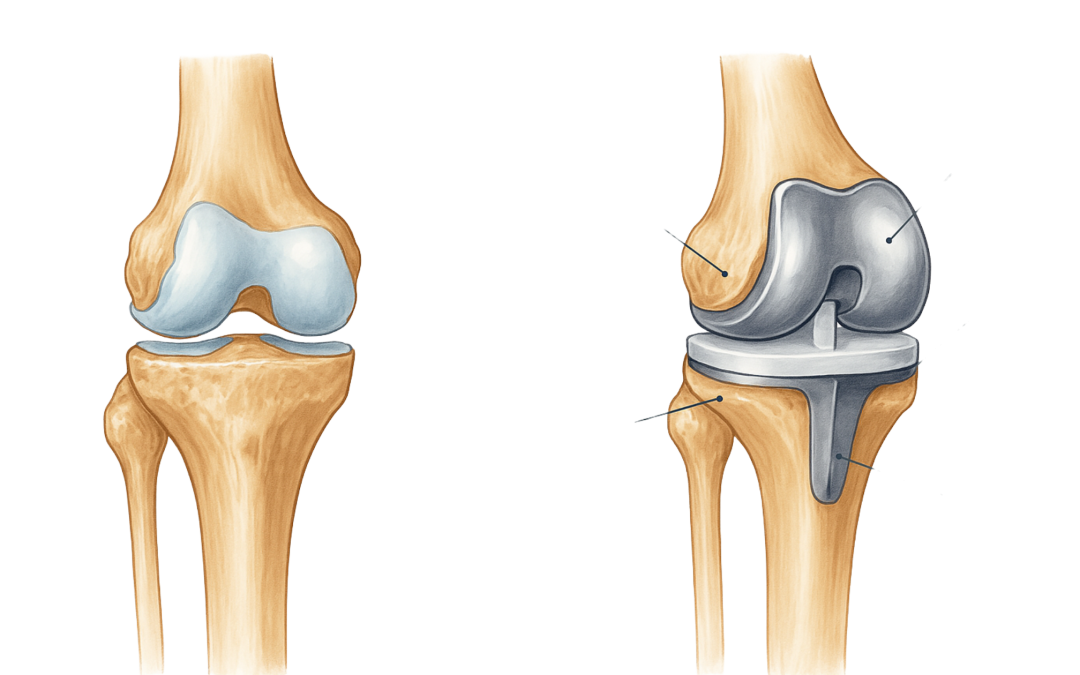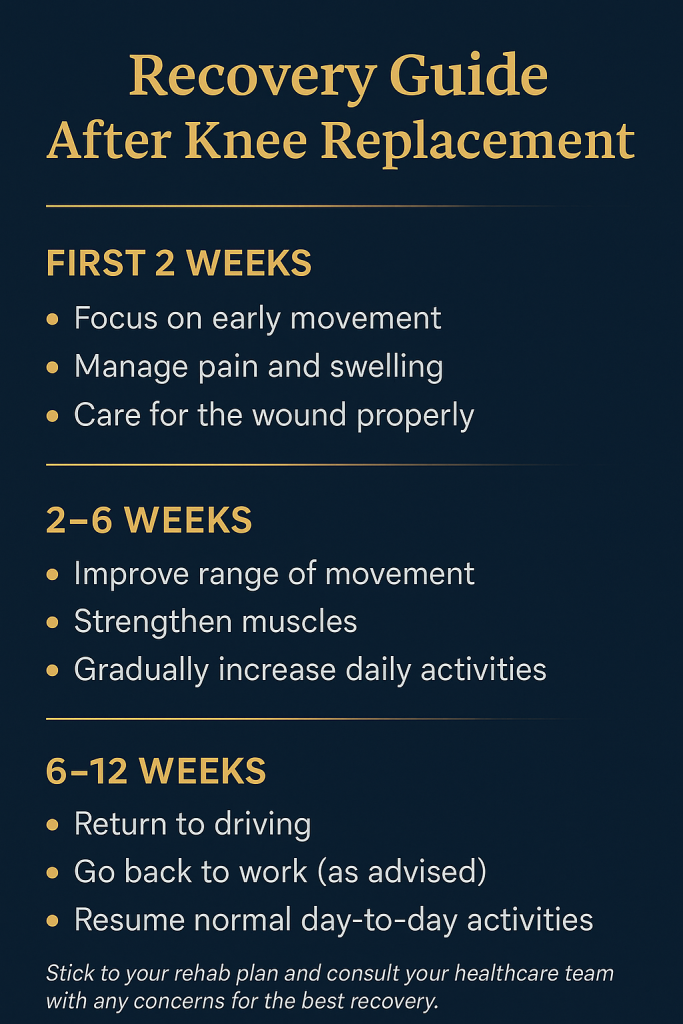Your recovery guide following Knee Replacement Surgery
Knee replacement surgery can be life-changing. It relieves pain, improves mobility, and helps you regain confidence in daily life. Recovery does take time — but with the right support and effort, most patients return to the things they enjoy within weeks.
Here’s what you can expect after your knee surgery.
Getting up and moving early
You’ll be encouraged to stand and take your first steps on the same day as your operation. This is done with the help of the physiotherapy team. Early movement reduces the risk of blood clots and stiffness. It also speeds up your recovery.
Walking aids
At first, you will need crutches or a walking frame to move safely. As your strength improves, you’ll progress to a stick and then walk without support.
Most patients walk unaided within 4 to 6 weeks after surgery.
Managing pain and swelling
Pain and swelling are normal at first. They can increase after you walk or do your exercises.
You’ll receive pain relief to help you stay mobile. To help manage swelling:
-
Elevate your leg when resting
-
Use ice packs regularly
-
Do your exercises every day
These steps will make you more comfortable and help you recover faster.
Wound care
Your wound will have a dressing that usually stays in place for 12 to 14 days, unless told otherwise. Your wound will be checked by your GP practice nurse or at a hospital clinic, depending on where your surgery was done.
If you have stitches or clips, these are removed about two weeks after surgery.
A small amount of spotting on the dressing is normal. However, contact your team if you see:
-
More redness or swelling
-
Any discharge
-
Anything else that worries you
You’ll receive clear aftercare instructions before you leave the hospital.
Knee precautions
For the first six weeks, expect some swelling, especially after activity. Daily tasks may feel difficult at first — this is normal.
Here are some key tips:
-
Expect some stiffness and discomfort — rest, elevate, and use ice
-
Keep doing your exercises as advised — they help prevent stiffness
-
Use your walking aids when needed — don’t rush
-
Stay active within your limits — this helps you get the best results from your new knee
Mr Bitar and his team will help you build strength safely through movement and regular exercises.
Physiotherapy and exercises
Most patients can bend their knee to 90 degrees before leaving hospital. Daily exercises help you keep improving.
Your main goals are:
-
Bend your knee — aim for 90 degrees or more by week two
-
Straighten your knee fully — just as important as bending
To help straighten the knee:
-
When sitting, rest your ankle on a footstool to leave your knee unsupported
-
When lying down, place a rolled towel under your ankle to stretch the knee fully
Some tightness or pulling is normal — this improves with time and practice.
Returning to activities
- Most people can do simple daily tasks within a few weeks. These include:
-
Walking around the house
-
Preparing light meals
-
Going out for short walks
You’ll get advice about when you can:
-
Drive — usually after 4–6 weeks
-
Return to work — depending on your role
-
Enjoy low-impact activities like walking, cycling, or swimming — usually once the wound has healed
Every patient recovers at their own pace. Staying consistent with your exercises and activity is the best way to succeed.
Follow-up and support
You’ll have a follow-up appointment with Mr Bitar or one of the team to check your progress and answer any questions.
If you have concerns before then, please get in touch. Your recovery is important, and we’re here to help you every step of the way.
Ready to take the next step?
Book a consultation with Mr Khaldoun Bitar to find out if knee replacement surgery is right for you.


